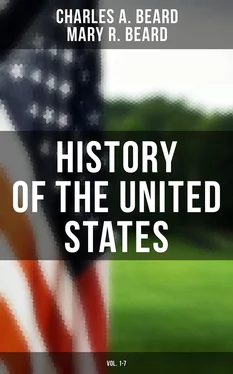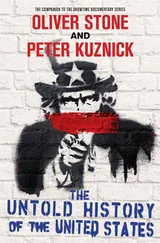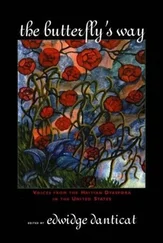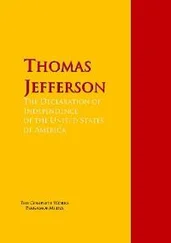The story of this traffic in white servants is one of the most striking things in the history of labor. Bondmen differed from the serfs of the feudal age in that they were not bound to the soil but to the master. They likewise differed from the negro slaves in that their servitude had a time limit. Still they were subject to many special disabilities. It was, for instance, a common practice to impose on them penalties far heavier than were imposed upon freemen for the same offense. A free citizen of Pennsylvania who indulged in horse racing and gambling was let off with a fine; a white servant guilty of the same unlawful conduct was whipped at the post and fined as well.
The ordinary life of the white servant was also severely restricted. A bondman could not marry without his master's consent; nor engage in trade; nor refuse work assigned to him. For an attempt to escape or indeed for any infraction of the law, the term of service was extended. The condition of white bondmen in Virginia, according to Lodge, "was little better than that of slaves. Loose indentures and harsh laws put them at the mercy of their masters." It would not be unfair to add that such was their lot in all other colonies. Their fate depended upon the temper of their masters.
Cruel as was the system in many ways, it gave thousands of people in the Old World a chance to reach the New—an opportunity to wrestle with fate for freedom and a home of their own. When their weary years of servitude were over, if they survived, they might obtain land of their own or settle as free mechanics in the towns. For many a bondman the gamble proved to be a losing venture because he found himself unable to rise out of the state of poverty and dependence into which his servitude carried him. For thousands, on the contrary, bondage proved to be a real avenue to freedom and prosperity. Some of the best citizens of America have the blood of indentured servants in their veins.
The Transported—Involuntary Servitude.—In their anxiety to secure settlers, the companies and proprietors having colonies in America either resorted to or connived at the practice of kidnapping men, women, and children from the streets of English cities. In 1680 it was officially estimated that "ten thousand persons were spirited away" to America. Many of the victims of the practice were young children, for the traffic in them was highly profitable. Orphans and dependents were sometimes disposed of in America by relatives unwilling to support them. In a single year, 1627, about fifteen hundred children were shipped to Virginia.
In this gruesome business there lurked many tragedies, and very few romances. Parents were separated from their children and husbands from their wives. Hundreds of skilled artisans—carpenters, smiths, and weavers—utterly disappeared as if swallowed up by death. A few thus dragged off to the New World to be sold into servitude for a term of five or seven years later became prosperous and returned home with fortunes. In one case a young man who was forcibly carried over the sea lived to make his way back to England and establish his claim to a peerage.
Akin to the kidnapped, at least in economic position, were convicts deported to the colonies for life in lieu of fines and imprisonment. The Americans protested vigorously but ineffectually against this practice. Indeed, they exaggerated its evils, for many of the "criminals" were only mild offenders against unduly harsh and cruel laws. A peasant caught shooting a rabbit on a lord's estate or a luckless servant girl who purloined a pocket handkerchief was branded as a criminal along with sturdy thieves and incorrigible rascals. Other transported offenders were "political criminals"; that is, persons who criticized or opposed the government. This class included now Irish who revolted against British rule in Ireland; now Cavaliers who championed the king against the Puritan revolutionists; Puritans, in turn, dispatched after the monarchy was restored; and Scotch and English subjects in general who joined in political uprisings against the king.
The African Slaves.—Rivaling in numbers, in the course of time, the indentured servants and whites carried to America against their will were the African negroes brought to America and sold into slavery. When this form of bondage was first introduced into Virginia in 1619, it was looked upon as a temporary necessity to be discarded with the increase of the white population. Moreover it does not appear that those planters who first bought negroes at the auction block intended to establish a system of permanent bondage. Only by a slow process did chattel slavery take firm root and become recognized as the leading source of the labor supply. In 1650, thirty years after the introduction of slavery, there were only three hundred Africans in Virginia.
The great increase in later years was due in no small measure to the inordinate zeal for profits that seized slave traders both in Old and in New England. Finding it relatively easy to secure negroes in Africa, they crowded the Southern ports with their vessels. The English Royal African Company sent to America annually between 1713 and 1743 from five to ten thousand slaves. The ship owners of New England were not far behind their English brethren in pushing this extraordinary traffic.
As the proportion of the negroes to the free white population steadily rose, and as whole sections were overrun with slaves and slave traders, the Southern colonies grew alarmed. In 1710, Virginia sought to curtail the importation by placing a duty of £5 on each slave. This effort was futile, for the royal governor promptly vetoed it. From time to time similar bills were passed, only to meet with royal disapproval. South Carolina, in 1760, absolutely prohibited importation; but the measure was killed by the British crown. As late as 1772, Virginia, not daunted by a century of rebuffs, sent to George III a petition in this vein: "The importation of slaves into the colonies from the coast of Africa hath long been considered as a trade of great inhumanity and under its present encouragement, we have too much reason to fear, will endanger the very existence of Your Majesty's American dominions.... Deeply impressed with these sentiments, we most humbly beseech Your Majesty to remove all those restraints on Your Majesty's governors of this colony which inhibit their assenting to such laws as might check so very pernicious a commerce."
All such protests were without avail. The negro population grew by leaps and bounds, until on the eve of the Revolution it amounted to more than half a million. In five states—Maryland, Virginia, the two Carolinas, and Georgia—the slaves nearly equalled or actually exceeded the whites in number. In South Carolina they formed almost two-thirds of the population. Even in the Middle colonies of Delaware and Pennsylvania about one-fifth of the inhabitants were from Africa. To the North, the proportion of slaves steadily diminished although chattel servitude was on the same legal footing as in the South. In New York approximately one in six and in New England one in fifty were negroes, including a few freedmen.
The climate, the soil, the commerce, and the industry of the North were all unfavorable to the growth of a servile population. Still, slavery, though sectional, was a part of the national system of economy. Northern ships carried slaves to the Southern colonies and the produce of the plantations to Europe. "If the Northern states will consult their interest, they will not oppose the increase in slaves which will increase the commodities of which they will become the carriers," said John Rutledge, of South Carolina, in the convention which framed the Constitution of the United States. "What enriches a part enriches the whole and the states are the best judges of their particular interest," responded Oliver Ellsworth, the distinguished spokesman of Connecticut.
Читать дальше












